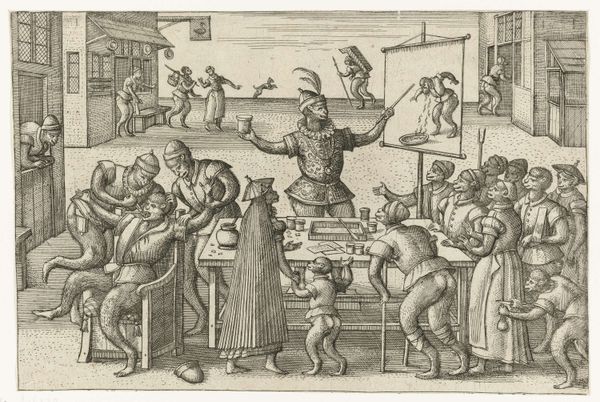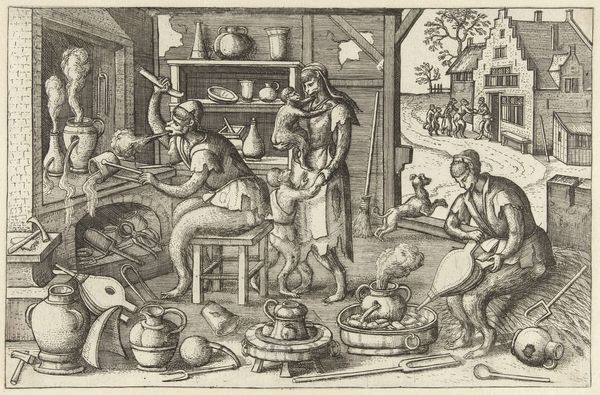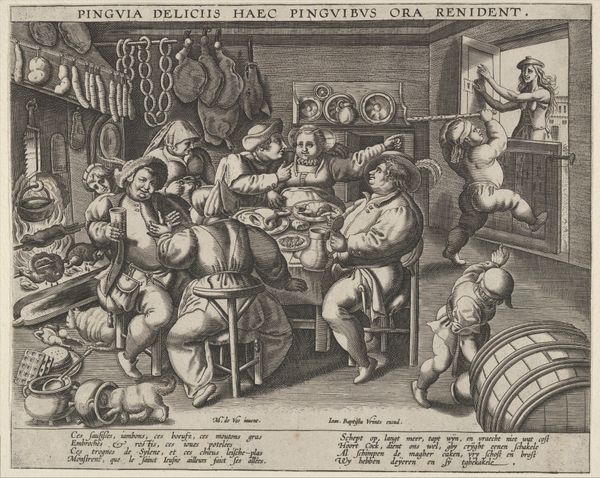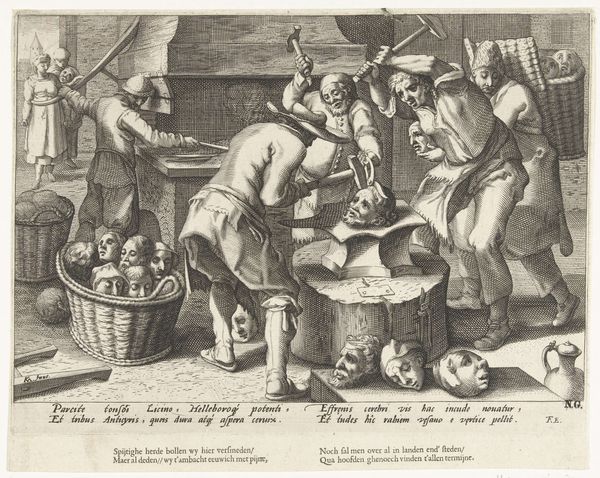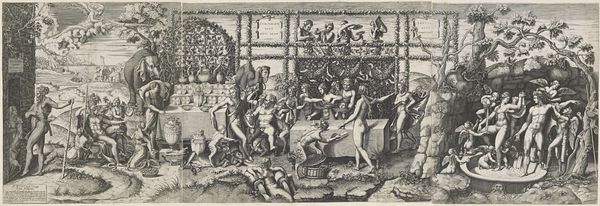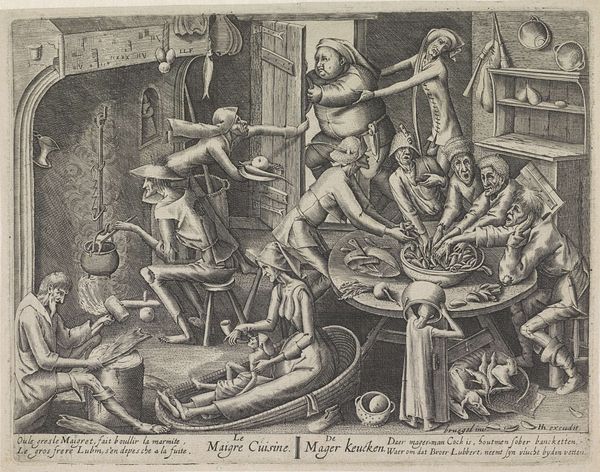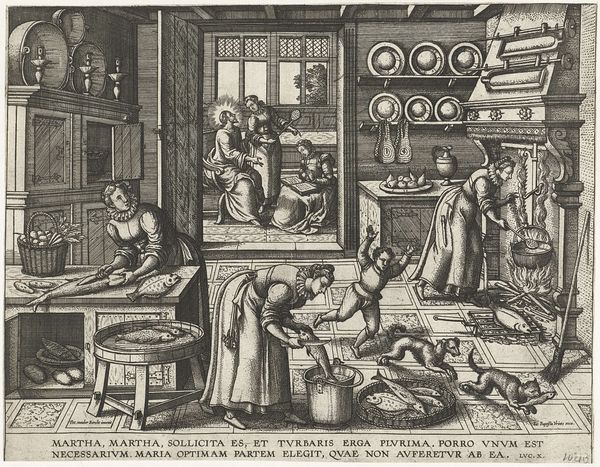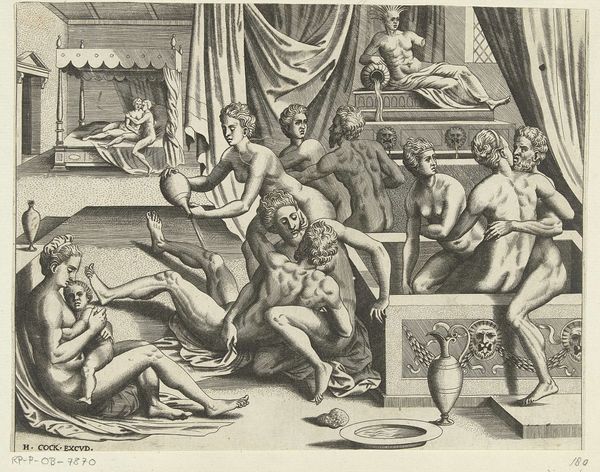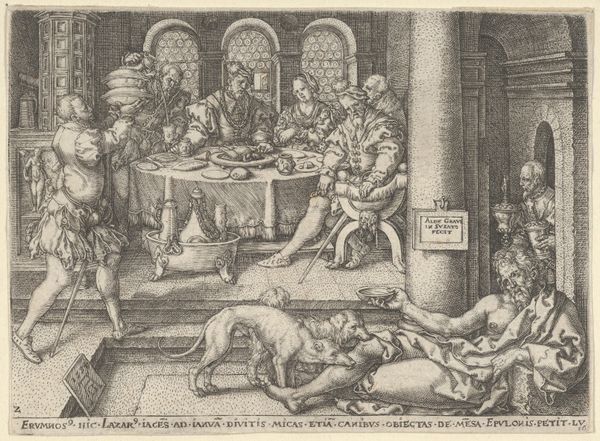
The Fat Kitchen, from the series Monkeys 1559 - 1590
0:00
0:00
drawing, print, ink, woodcut, engraving
#
drawing
#
narrative-art
#
pen drawing
# print
#
figuration
#
ink
#
woodcut
#
line
#
genre-painting
#
northern-renaissance
#
engraving
Dimensions: sheet: 8 5/8 x 10 3/4 in. (21.9 x 27.3 cm) plate: 7 15/16 x 9 7/8 in. (20.1 x 25.1 cm)
Copyright: Public Domain
Curator: This piece plunges us into a scene brimming with dark humor. Entitled "The Fat Kitchen," from the series "Monkeys," the woodcut was conceived between 1559 and 1590 by Peeter van der Borcht. It resides at the Metropolitan Museum of Art in New York. It's teeming with these simian figures indulging in... well, excess, would you say? Editor: Excess is putting it mildly. The mood strikes me immediately as darkly comic. It's as if we've stumbled into a bizarre, carnivalesque inversion of a well-stocked kitchen. The grotesque figures—part human, part monkey—seem caught in a frenzy of consumption. There's a disturbing delight in their overindulgence. Curator: The choice of monkeys is hardly accidental. In the 16th century, monkeys were often used as symbols of base desires, folly, and unbridled appetite. It’s not just a kitchen; it's a satirical commentary on gluttony, greed, and the consequences of unrestrained behavior, echoing familiar northern Renaissance themes of morality and the vanities. Consider also the etymology: the Middle Dutch word "kokenje" referred to a carnival where the participants engage in overeating, drinking, and sexual behavior. It can be read as a warning, like looking into an allegory, but simultaneously humorous in its exaggeration of what one can become by not restricting one's indulgences. Editor: Yes, and there is that unsettling sense of the performance of social roles in that act of consumption. They’re not just eating; they're performing a feast. Look at how van der Borcht used engraving and ink to create a dense, chaotic composition, drawing the viewer's eye to the excesses on display. It forces us to examine not just their actions, but the broader cultural context that makes such a scene possible. The text in Latin, French, and Flemish further anchors the scene as one centered on greed. Curator: Exactly. This piece functions as both an observation of and a judgment on society's relationship with excess, a topic that continues to be discussed even to this day. It shows that concerns around overconsumption are hardly novel. The piece stands as an observation about aspects of human culture. Editor: Precisely. It’s a grimly relevant slice of life presented with a playful—though biting—edge. A perspective as relevant in van der Borcht's era as it is now.
Comments
No comments
Be the first to comment and join the conversation on the ultimate creative platform.
